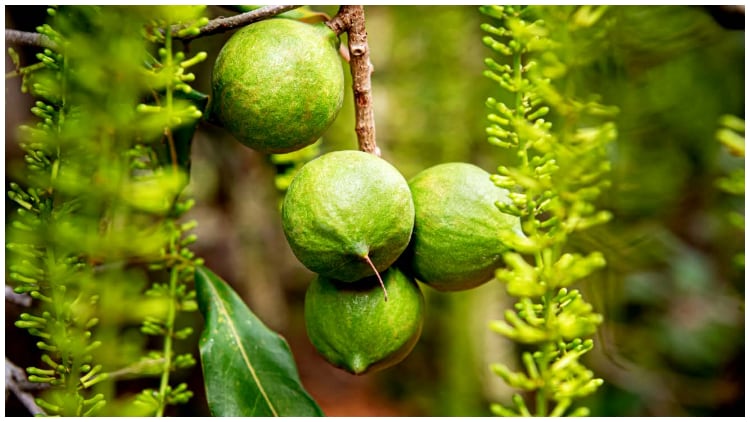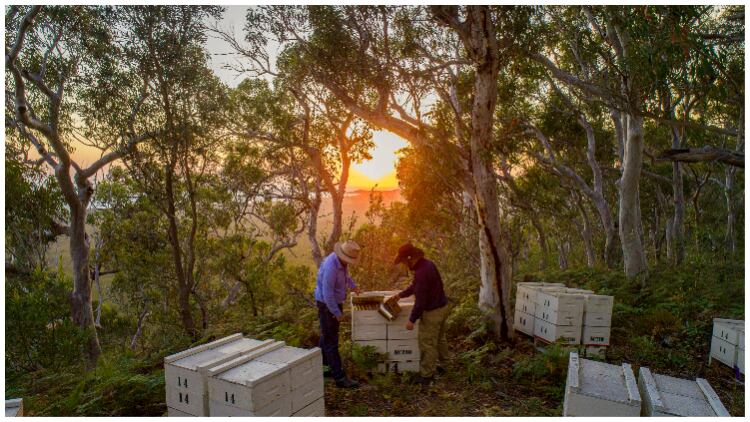Australia spends about AUD$1.4 billion a year on agricultural R&D, around 40% of which is funded by the Australian Government. Australian farmers, scientists and researchers are driving advances in bioscience, novel farming techniques, as well as food innovation and processing, with many companies and research centres harnessing these advancements to improve sustainability and traceability.
The new Australia-UK Free Trade Agreement will soon come into force, bringing a range of Australia’s native food products to UK plates.
How will UK food offerings change following the Australian FTA agreement?
Say hello to bushfoods
Australia’s Saltbush Kitchen produces rubs and salts using all-natural ingredients that are unique to Australia such as lemon myrtle and kunzea. Lemon myrtle is one of the most cultivated and commercially mature species in the native food industry and can be used in a variety of sweet and savoury dishes, from seafood dishes to cakes and cookies. It has an intense lemon flavour and aroma without the acidity. Lemon myrtle is exceptionally rich in calcium and high in antioxidants, lutein, vitamin E, zinc and magnesium.1
Seaweed science
An increase in awareness of the health benefits of algae-based ingredients is the main driver for new and emerging algae-based food and drinks in Australia. Algae is a promising and sustainable protein source. The presence of essential amino acids makes algae protein superior to some other plant proteins.2
Seaweed is used in innovative ways in Australia. Australian drinks companies such as Seadrift Distillery are inspired by the mindful drinking movement and have created an award-winning non-alcoholic spirit distilled in traditional copper pot stills, which offers an infusion of seaweed and other fresh coastal and sea botanicals.
Dr Pia Winberg, CEO and Founder of PhycoHealth, which uses seaweed to create pasta, granola, supplements, and skincare products commented: “Australian seaweed is nutritional dynamite and helps people fill dietary gaps that cause health challenges such as inflammation and poor gut health. It’s packed full of ingredients many Westerners are deficient in. PhycoHealth Seaweed contains proteins and peptides, B12, omega-3s, antioxidants, micro nutrients like iron, vitamins, fibre and more.”
Manuka and Jarrah honey
Australia’s floral diversity helps create unique honey varieties that are popular with UK consumers. Australian Manuka honey produced by companies such as Capilano Honey is one of nature’s sweetest superfoods and is produced by bees that have foraged on the flowers of Leptospermum trees, where over 80 species are native to Australia. Manuka honey contains a high concentration of methylglyoxal, this is considered the main antibacterial agent in Manuka honey.3
The floral diversity of the remote Australian forests helps companies such as Forest Fresh create another uniquely Australian honey variety – Jarrah, which has a smooth, caramel-like flavour. Jarrah honey is a High Total Activity (TA) honey sourced from the native forests of Western Australia.4
“Jarrah honey can relieve sore throats, may be useful in healing wounds, is low GI and therefore diabetic friendly, is considered a good prebiotic, and has more antioxidants compared to other honey varieties,” Katie Fewster, Marketing Manager at Forest Fresh Australia said.
Macadamia nuts continue to grow
Not many people know that the macadamia nut is the only Australian native food crop that has ever been developed and traded internationally as a commercial food product. In fact, it is now Australia’s fourth largest horticultural export. Today, the world’s largest producers of macadamia nuts are Australia and South Africa, together they account for about 50 percent of total production.

We have seen a growing demand for macadamias across European markets. Europe accounts for around 30% of total global macadamia imports. Over the next five years, the expected market growth rate for macadamia nuts in Europe is higher than for most other nuts.5 This is driven by the changes in consumption patterns of European consumers who increasingly look for unique tastes, healthier snack options and plant-based sources of protein.
“Following an AUD$9 million investment in food safety technology,” said Claudia Lordao, Group Marketing Manager for Marquis Macadamias, “we recently became the first macadamia processor globally to successfully implement 5 log pasteurisation capability in its facilities through the installation of Napasol pasteurisation systems.6 The process delivers an effective kill step for Salmonella and other microorganisms. It uses only heat and steam to treat the kernel under precise pressure conditions. As a nonchemical treatment, it doesn’t impact on the taste, appearance, texture, and shelf life of the product.”
A new kind of barley
Australia’s national science agency CSIRO has long been interested in barley as a grain with human health benefits. One particular barley grain emerged from research as having higher fibre content and enhanced nutritional benefits compared with regular barley. A programme of conventional plant breeding led to the development of BARLEYmax™, a high fibre wholegrain with high levels of resistant starch. Foods with BARLEYmax™ as their key ingredient have a low glycaemic index and produce positive changes in a range of biomarkers of bowel health.7
BARLEYmax™ has been licensed to CSIRO spin-off company The Healthy Grain. Already successful in the Australian, Asian and US markets, the nutritional wholegrain that provides twice the fibre compared to conventional cereal varieties is now set to help consumers in the UK and Ireland overcome the fibre shortage.
Earlier this year, AB Mauri signed an exclusive agreement to distribute BARLEYmax™ across the UK & Ireland. The introduction of BARLEYmax™ in the UK and Ireland provides the UK’s agrifood industry with new means to innovate, it also gives UK consumers a wider selection of healthy options, and it improves overall food security.
At Austrade, we look forward to introducing UK consumers to some of our unique Australian products in 2023.
References
- https://agrifutures.com.au/wp-content/uploads/publications/14-117.pdf
- https://agrifutures.com.au/wp-content/uploads/2021/11/21-127.pdf
- Antibacterial Potency of Honey - PMC (nih.gov)
- The Antibacterial Activity of Honey Derived from Australian Flora - PMC (nih.gov)
- www.cbi.eu/market-information/processed-fruit-vegetables-edible-nuts/macadamia-nuts/market-potential
- https://marquis.com/quality-and-food-safety/
- https://www.csiro.au/en/research/production/food/BARLEYmax-BUcase-study




